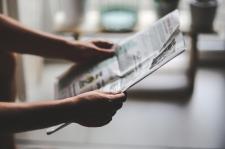‘Motherless babies!’ How to create a tabloid science headline in five easy steps
By Gretchen Vogel,
Science Magazine
| 09. 14. 2016
No, scientists have not figured out how to make “motherless babies,” nor have they gotten any closer to making an embryo without using an egg cell. A paper published yesterday in Nature Communications sparked a flurry of headlines about futuristic ways to get around the basic formula of "sperm + egg = embryo." Many stories claimed researchers had moved closer to using a skin cell, for example, instead of an egg cell, to make a baby. That, they said, could make it possible for a gay couple to have a baby by fusing sperm from one man with the skin cell of another.
But those headlines and stories frequently left out a crucial detail: The researchers, led by Tony Perry, an embryologist at the University of Bath in the United Kingdom, most definitely needed egg cells—also called oocytes—to make the mouse pups they described. The egg cells they experimented on were past the typical “use by” date, in that they had been chemically prompted to start dividing. (Usually it is fertilization by sperm that provides that signal.) That meant that they had started...
Related Articles
By Deni Ellis Béchard, The Washington Post | 10.07.2025
In 1949, when John Gurdon was a 16-year-old boarding school student at Eton College in England, his teacher described his biology studies as “disastrous” and his scientific ambitions as “ridiculous.”
“If he can’t learn simple biological facts,” his term report...
By John H. Evans, Craig Callender, Neal K. Devaraj, Farren J. Isaacs, and Gregory E. Kaebnick, Issues in Science and Technology | 07.04.2025
The controversy around a ban on “mirror life” should lead to a more nuanced public conversation about how to manage the benefits and risks of precursor biotechnologies.
About five years ago, the five of us formed a discussion group to...
Riquet Mammoth Kakao (c.1920)
by Ludwig Hohlwein, Public Domain via Flickr
Colossal, the de-extinction company, scored headlines (1, 2, 3, 4, 5) recently by announcing that they had created mice! Not just any mice, not even colossal mice, but genetically engineered, normal-size “woolly mice” that are the result of editing seven genes in mouse embryos. This Colossal presented as an important step toward making a specimen of charismatic megafauna – a...
By Antonio Regalado, MIT Technology Review | 05.06.2024
It was a cool morning at the beef teaching unit in Gainesville, Florida, and cow number #307 was bucking in her metal cradle as the arm of a student perched on a stool disappeared into her cervix. The arm held...




